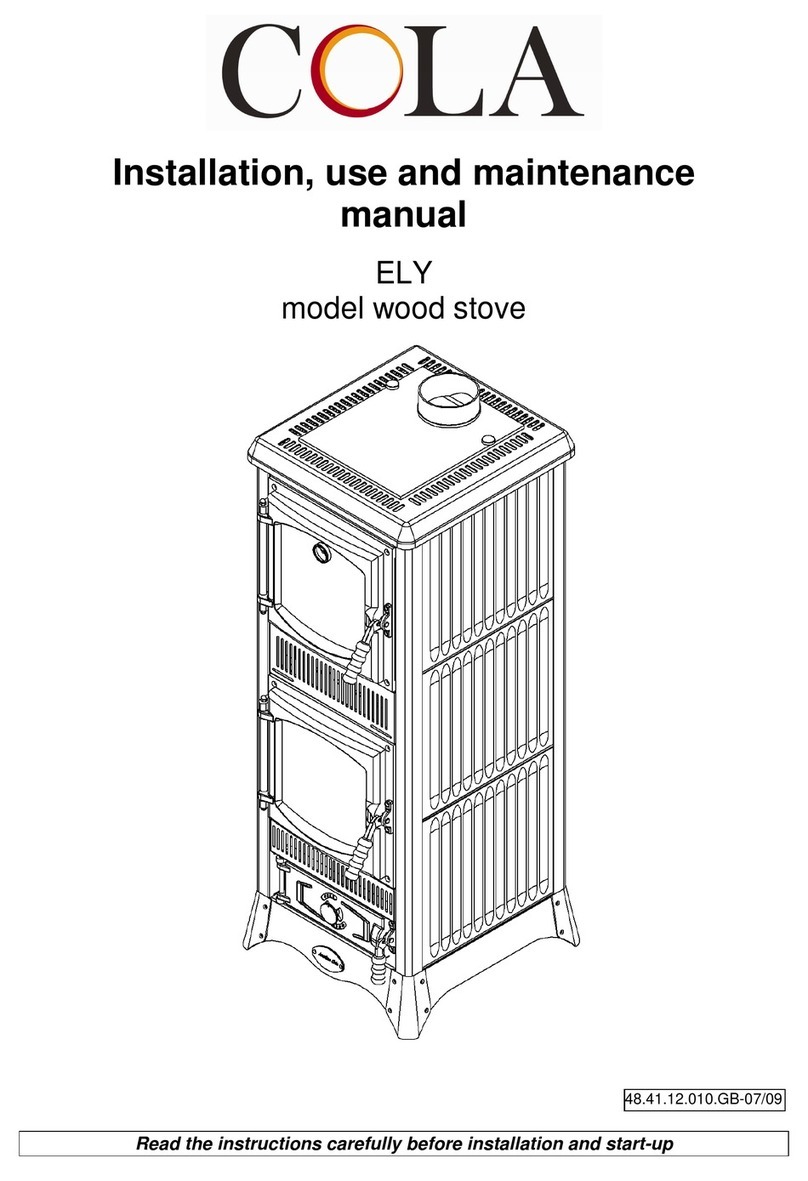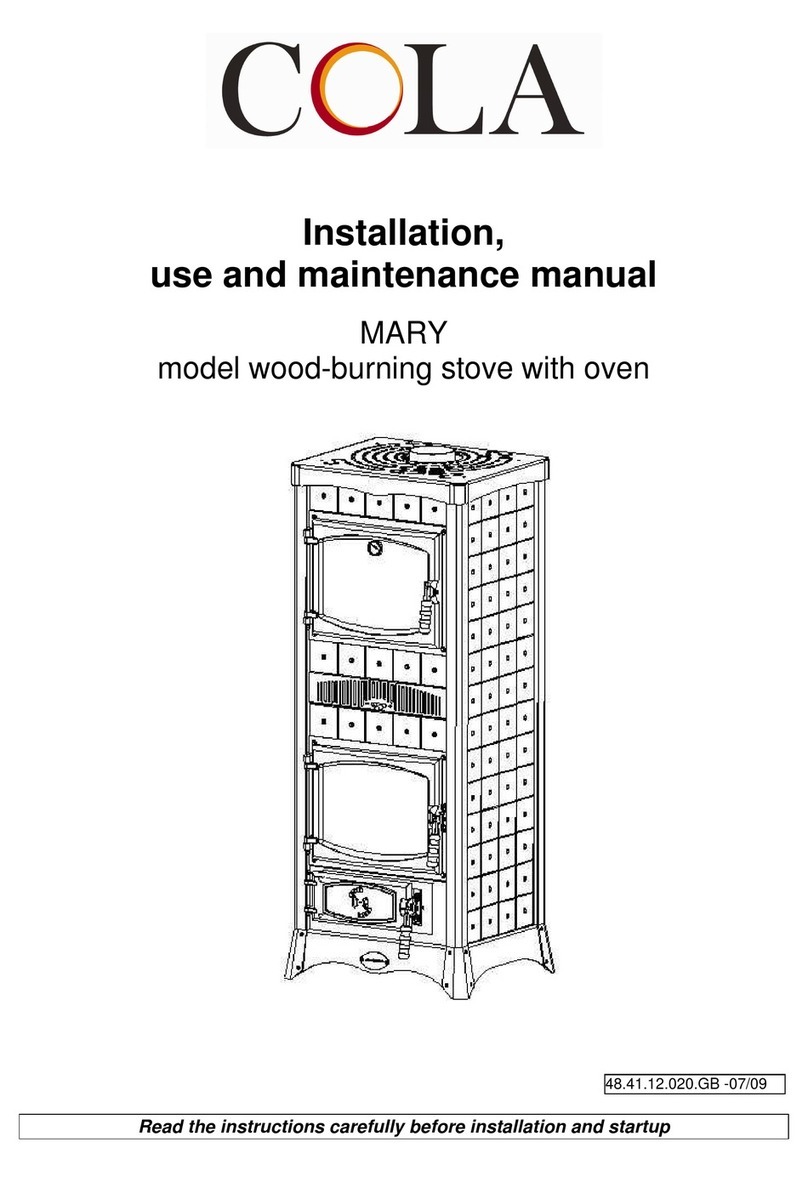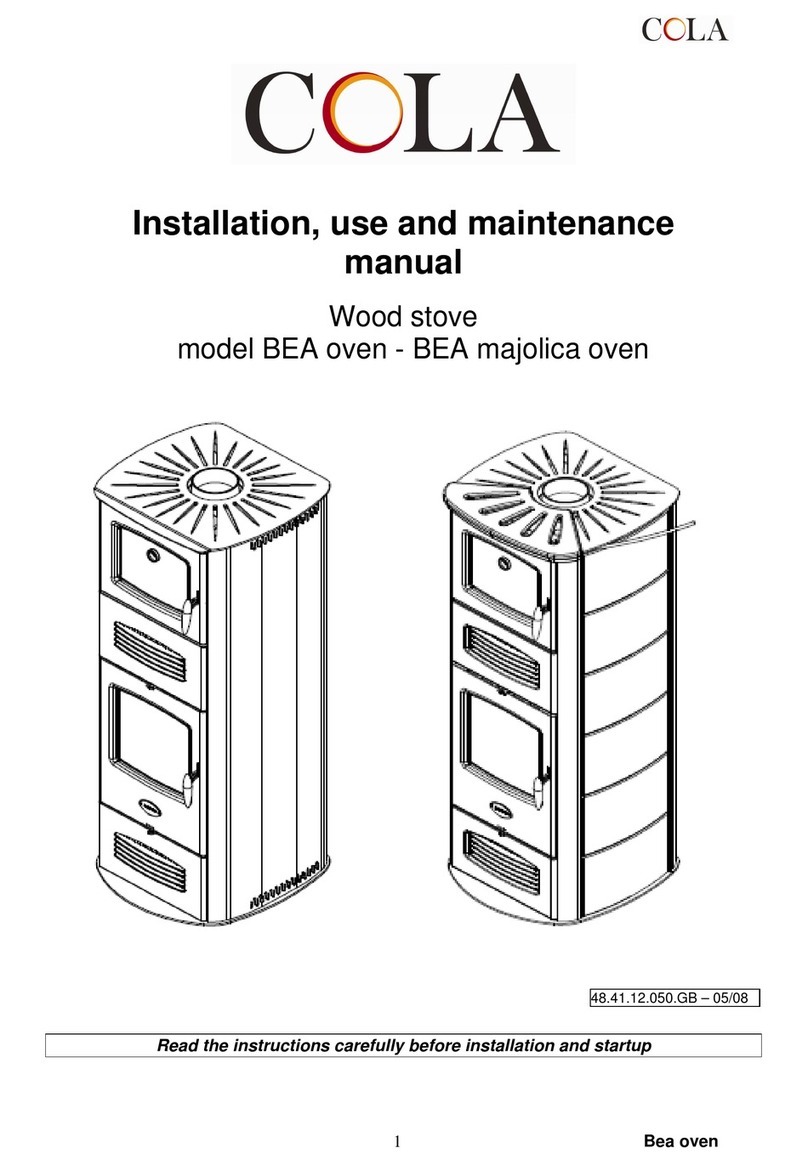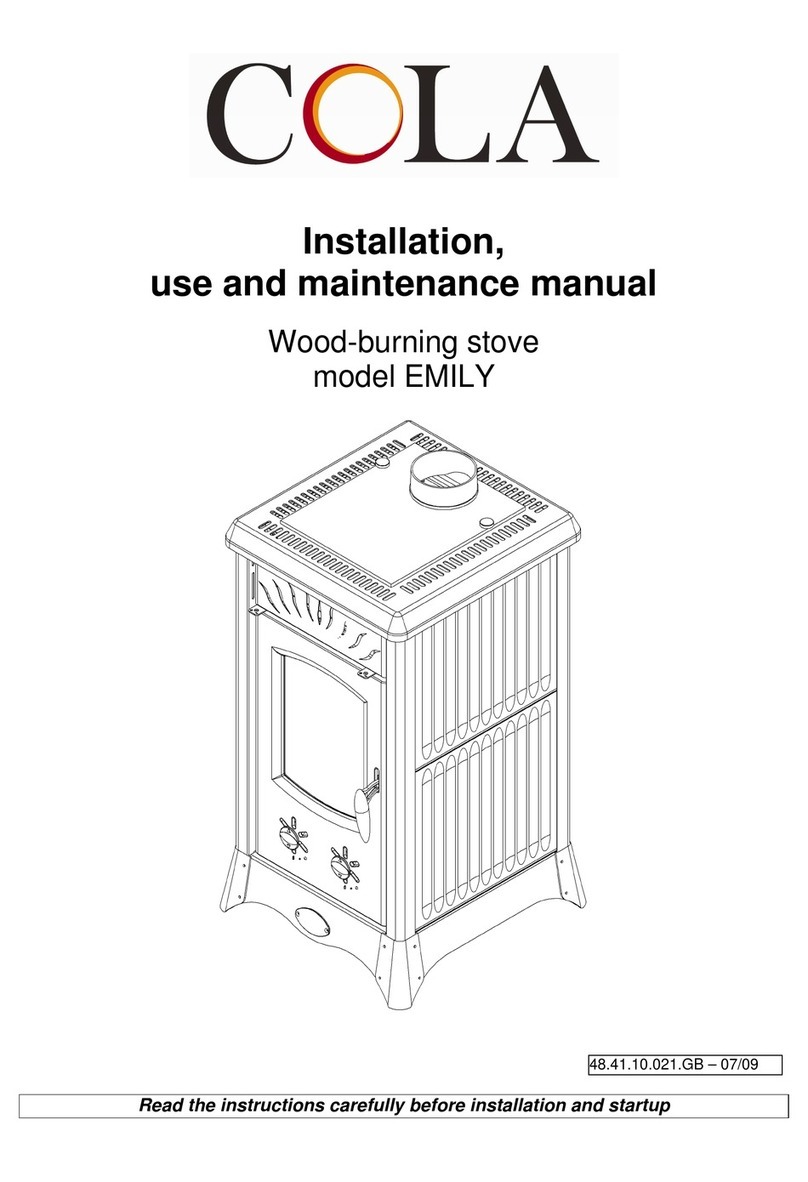
8 Betty
3.5 Normal operation
Remove the ash from the grate each time before loading fuel. Put 2-3 logs of wood on the bed of embers for even
consumption and good efficiency.
Despite the large capacity of the combustion chamber, it is advisable to only load a max. of 2-3 logs at a time: the
hourly wood load for obtaining nominal heat output is given on the dataplate. Overloading does not increase
efficiency, but will overheat the stove, damaging it.
3.6 Operation with partial feed
Heat output can be controlled by reducing the combustion air. To guarantee operation for many hours at low heat,
the primary air control must only be opened at minimum.
With partial feed operation, a patina may form on the glass due to the low temperature in the fire zone. In any
case, a continuous fire with low output is not advisable.
3.6 Off-season operation
With outside temperatures above 15°C, the draught m ay be affected, resulting in a decrease in heat output and
therefore flue gases not completely exhausted (smell of smoke in the room). In this case it is advisable to remove
the ash from the grate and increase the combustion air. Put less fuel on the fire and clean the grate more
frequently.
3.7 Idle period
If the stove is not used for long periods it is advisable to store it in a safe and protected place.
To best preserve the stove:
-carefully clean it, and replace any damaged parts if necessary;
-cover it to protect from dust.
4 – ROUTINE STOVE CLEANING AND MAINTENANCE
Good maintenance will help improve stove operation, efficiency and service life.
Every day, before lighting the fire make sure to clean the grate of any unburnt residuals and remove the ash from
the ash pan zone.
4.1 Removing the ash
The stove has an ash pan and a removable grate which should be cleared of ash, using the poker supplied, every
time before loading fuel.
Make sure to periodically empty the ash pan, since the accumulation of ash under the grate hinders the flow of
combustion air. Otherwise the grate will overheat and may become damaged.
To prevent the risk of fire, allow the ashes to cool outdoors inside a metal container or in the stove and
eliminate them in compliance with current local regulations.
4.2 Cleaning the glass
The glass can be cleaned using a damp cloth and specific non-abrasive detergents.
Do not clean the glass during stove operation. The glass must only be cleaned when the stove is cold.
4.3 Cleaning the flue
A reduction in heat output is nearly always due to obstruction of the flue. Also, the presence of burnt gases with
odours can be a sign of an obstructed flue.
The flue of your stove must be cleaned at regular intervals. The amount of soot and the frequency of cleaning will
depend largely on the type of fuel and the type of use (low or high heat output).
To avoid unnecessary dust, carry out cleaning according to the following instructions:
-clean only when the stove is off;
-close all the openings that must not be cleaned;
-remove the flue pipe and clean it outdoors;
-remove the deposits inside the stove with a wire brush;
- all the residuals removed from the grate or the ash pan must be taken away;
- in any case detach the pipe from the chimney.
When refitting the pipes take care not to damage enamelled or painted parts and the seals.
Dispose of cleaning waste in accordance with the local regulations.
































